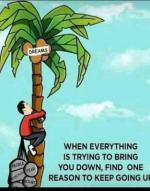National IQ Test – How it Scored IQ of the Viewers?
The national IQ test was a unique television program that aired in the early years of this millennium. It became one of the most-watched television programs in Australia; similar programs also aired in other parts of the world, like United Kingdom, France, Germany, and Holland.
Celebrities hosted it, and it allowed the viewers to test their intelligence and get their scores while they watched the show as it aired live on the television. It was utterly unique in its content and provided the opportunity for the first time to the entire continent at the same time to test their IQ in one night.
Understanding Background Of National IQ Test
The shows regarding the National IQ Test first aired in countries like Holland, France, Germany and United Kingdom and the Channel Nine Network had gotten rights for it. To develop a similar program, professor Con Stough was contacted for which he held reservations. In particular, he had been asked to create an intelligence test with multiple choice that could be administered on television and internet at the same time.
After a lot of considerations and imposing a lot of conditions, he finally agreed but still stated that these test results would not be held accountable in the future and that they were limited in providing the real picture of the individual’s IQ. Furthermore, he stressed that many other factors play an essential role in everyday life of the individual; for example, creativity, emotions, and motivations.
How People Participated in the Show?
The show of National IQ Test used to be a 3-hour program. There used to be seven groups of participants who took part in this mental challenge and they were joined by great hosts, Catriona Rowntree and Eddie McGuire. The seven categories were:

1.
Builders
2. Blondes
3. Teachers
4. Identical Twins
5. Students
6. Kiwis
7. Celebrities
The group that scored the highest amongst them was that of the teachers and surprisingly the celebrities followed them next in having the highest IQ result. The test that was administered, comprised of 76 questions and these were further categorized into six different types,
1. Arithmetic
2. Memory
3. Reasoning
4. Learning
5. Language
6. Spatial Processes
More than 40,000 people registered for online participation in the intelligence test while the National IQ Test show was being aired. Almost half of those registered, were able to complete the test by sending their answers through their mobile phones. The results were then used to draw out humorous comparisons, such as whether fans of Rugby league were more or less intelligent than the fans of Ausie rules.
How Popular Did the Show Get?
After its launch, it became the most popular show to be watched in the country. It's ranking even beat that of the sports programs, and after a decade it was one of the most watched shows ever in Australia. In 2003, when it was aired again, it attracted the same popularity and was viewed by 1.6 million people. However, due to the immense traffic that their corresponding website received during the show, the National IQ Test had to face some technical difficulties and had to shut down.
Furthermore, the controversy had also erupted on the definition of the word ‘obsequious.’ The switchboard of the network channel became swamped, and Twitter was inundated with messages regarding the disagreement of its meaning. It resulted in the announcement that both ‘nasty’ and ‘submissive’ will be considered as correct meanings and IQ scores instantly went up the skies.
How viewers Participated in the Program?
Participating in the National IQ Test was a unique experience for the viewers. Instead of taking a paper and pen test, they were allowed a chance to answer questions which were aired during the show in real time after which their results were measured. However, unlike the real IQ test, this program focused on a single category like general knowledge or the English Language.
The audience at the studio was also present who alongside the viewers back at home, gave the answers to the questions. The spectators were broken down into different fun categories for entertainment purposes and to challenge or confirm the stereotypes. For example, doctors and teachers are considered to be much more intelligent than performers, models or actors. Therefore the audience was categorized into groups of doctors, actors, scientists, teachers, etc. the IQ of the viewers were juxtaposed with other countrymen who were grouped into some form of groups based on similarities.
Practice with Free IQ Tests
Share Your Thoughts!
We find value in differences between learning, interpreting and overall opinions. Please share your thoughts freely about this topic, but always remain respectful. You can preview and edit on the next page before your submission is sent in. You will also be informed about this site's privacy policies. Thank you for your contribution.
Recent Articles
-
What type of test did I take
Apr 04, 22 04:09 AM
I was given a psychological test years ago, but wasn’t told what it was for. The rating used a bell curve and my score fell in the above average not yet -
ﹰﹰﹰﹰﹰﹰﹰGOOD
Aug 13, 21 03:20 PM
Since the enneagram test helps people to understand their strength and weaknessess. And helps them remove their weaknesses then the test is good -
Knowing the inner me
Aug 13, 21 03:17 PM
Sometimes I ask myself that is this my behaviour or not? Because I am really shy and I lack confidence, I find it hard to socialize with other people.I
